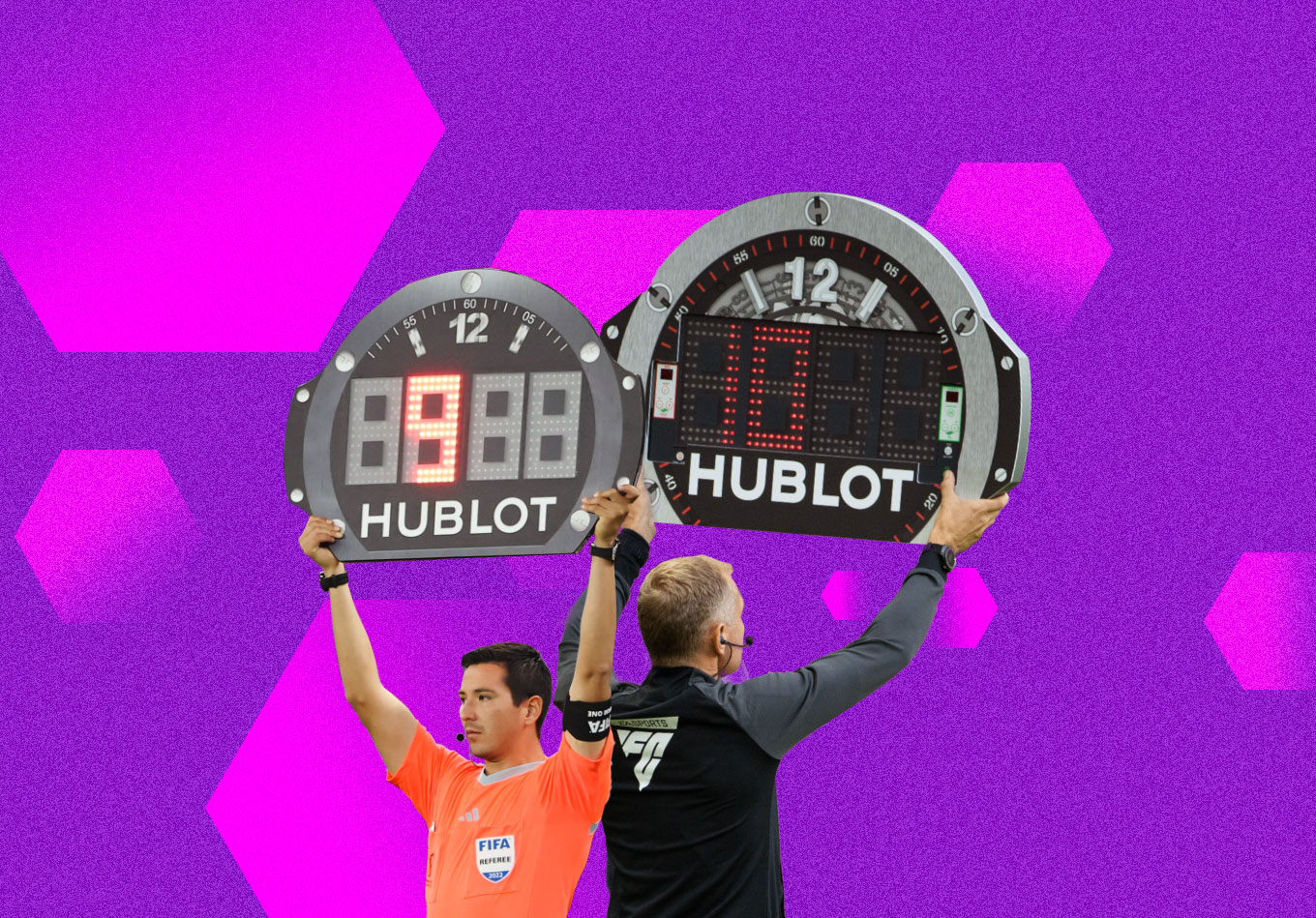One of the biggest talking points at the start of the season in English football centred around the length of matches.
Referees in the Premier League and EFL adopted a new approach to timekeeping for the 2023-24 campaign. According to the EFL themselves, in line with the most recent IFAB guidance, officials were tasked with ensuring a more accurate calculation of additional time alongside an improvement in the amount of time the ball is in play.
The impact of these new directives got a lot of attention. Matches suddenly jumped up to over 100 minutes; high-profile players, like Manchester United’s Rafael Varane, criticised the new measures; Manchester City boss Pep Guardiola spoke out against them after the Community Shield. The media coverage was wide-reaching; we even wrote a piece analysing the data behind the changes after the first few matchdays of the season.
But since then, the noise surrounding the issue has gone quiet. That’s probably because we’ve moved onto other things to talk about. Or maybe we all just got bored.
But are the trends of those initial matchdays still the same?
How Long Are Matches in England Now Lasting?
We’ve now got a pretty significant sample size to work from. So far in 2023-24, we’ve had 491 games across the top four leagues in England.
Just as we found at the start of the campaign, the point remains that the total match time for games across all of England’s top four divisions has increased notably compared to 2022-23’s averages.
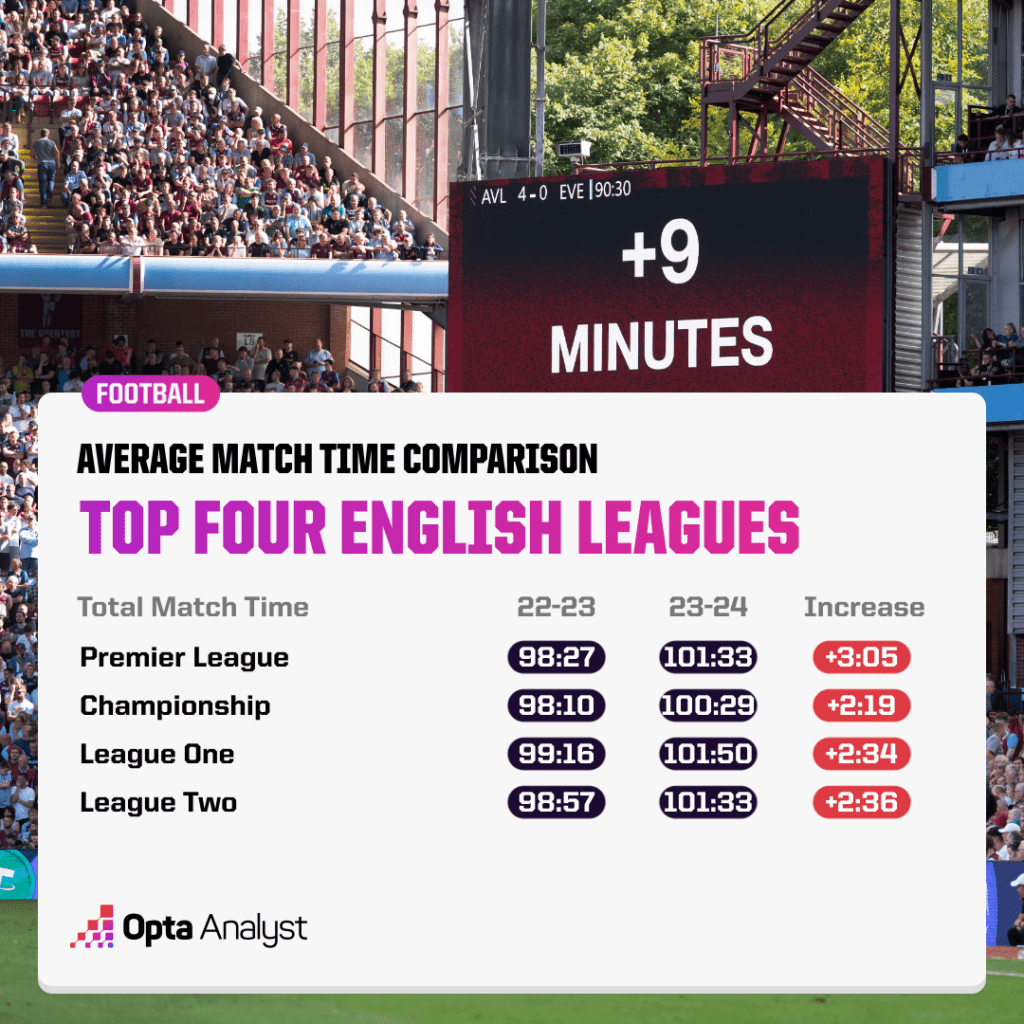
Premier League games are lasting just over three minutes longer than last season, and that figure is between two and three minutes in the EFL. All four leagues, on average, see the match clock now tick over the 100-minute mark.
But you’ve watched the games. You’ve seen the added-on time at the end of each period. Games are lasting longer. That’s not the interesting bit.
Are We Seeing More of the Action?
The crucial thing to look at is ball-in-play time. Put simply, for how much of a given game is the ball in the field of play?
Well, that too is up across all four divisions in England, ranging from an extra 3m 56s in the Premier League, all the way to a huge 7m 30s in League Two.
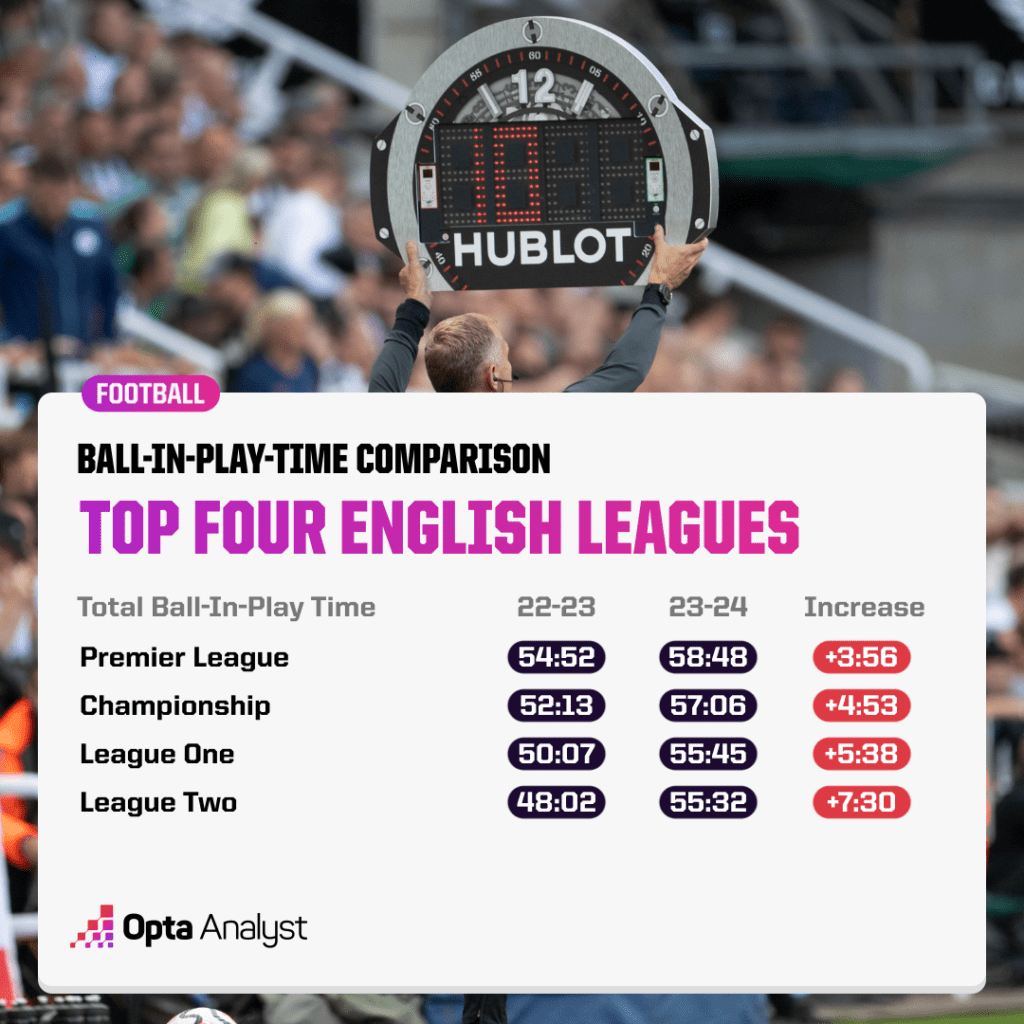
The data from League One and League Two is particularly profound. Fans watching League One games are now seeing over five and a half more minutes of action, and that jumps to seven and a half minutes in League Two.
The final piece of the puzzle is to look at the percentage of the total match time that the ball is in play. That’s the real litmus test for whether these new directives are having their desired effect.
We’ve seen an increase in ball-in-play % across all four divisions, and in some cases a substantial one.
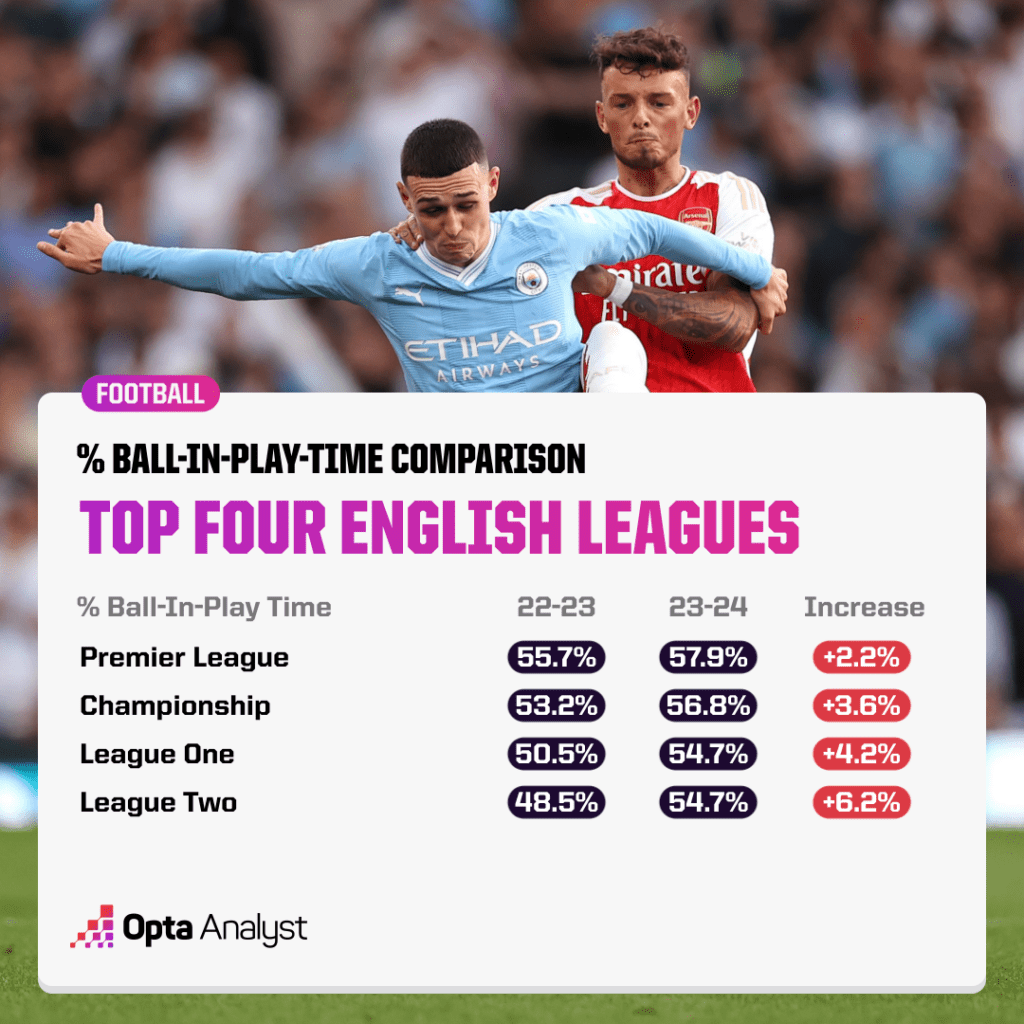
The Premier League has so far seen a 2.2% increase in the percentage of ball-in-play time, while that figure increases consistently as you journey down the pyramid. It’s up 3.2% in the Championship, 4.2% in League One and an incredible 6.2% in League Two.
As we’ve remarked in our data comparison between the leagues in the English football pyramid, the problem of “lost time” has always been more severe as you go down the leagues. What’s promising is that’s where we’re seeing the biggest improvements.
More Added Time Means More Late Drama
Beyond seeing more action, one of the best byproducts of these new directives is that games are seeing more and more drama, particularly in the latter stages.
When comparing the total number of shots in added time (across both halves) so far this season to this same point in 2022-23, we see a marked increase across all four leagues. The Premier League to date has seen a 38.7% rise in the total number of shots taken in stoppage time, with only League Two (50.7%) seeing a bigger jump.
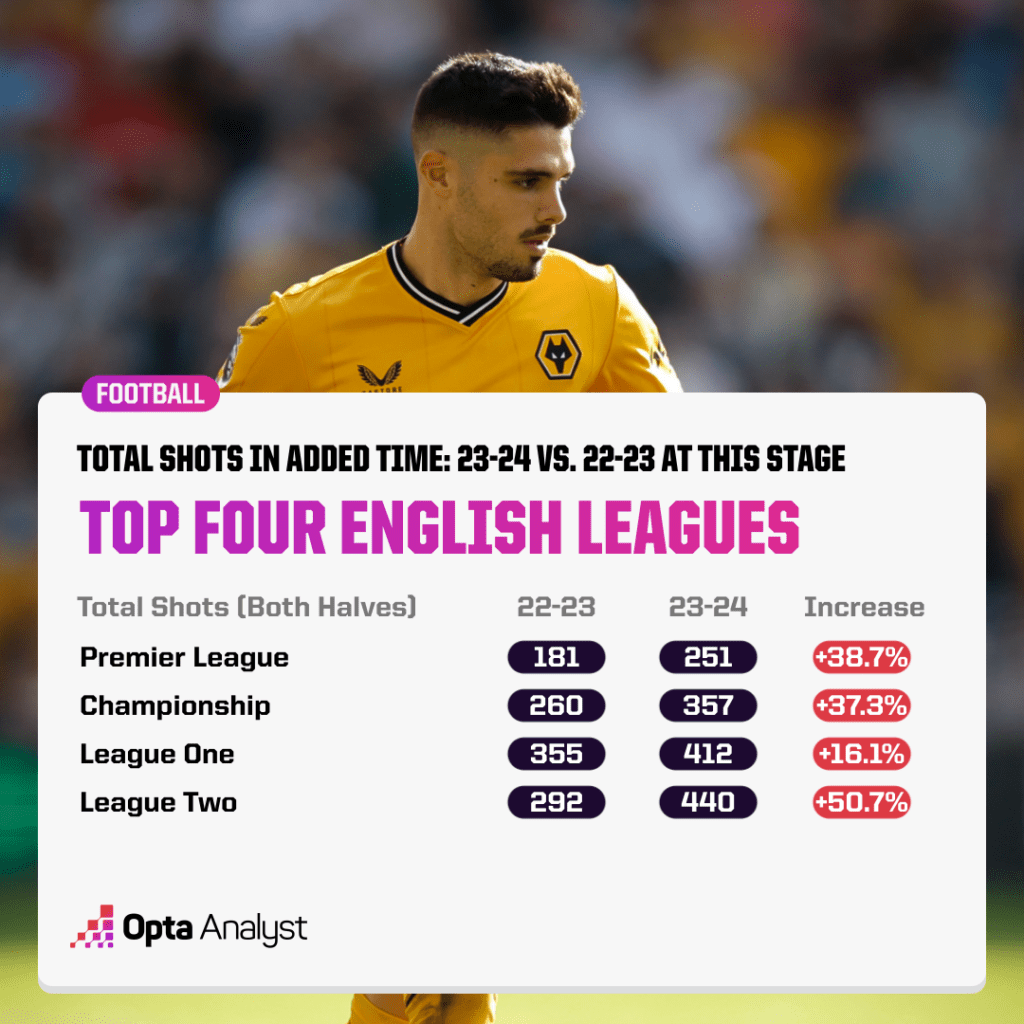
That pattern is even more marked when looking at goals scored in added time. The Premier League and Championship have been the home of late winners so far this season, with both competitions seeing huge percentage increases in the number of goals scored during stoppage time.

We’ve already witnessed the latest comeback in Premier League history thanks to Tottenham’s 2-1 win over Sheffield United, while Scott McTominay’s double for Manchester United earned them their latest ever comeback win.
When it comes to added-on time, it seems the new directives are working, at least from a fan’s perspective. We’re seeing more football than ever, and one of the best knock-on effects is an unprecendented amount of late drama.
Enjoy this? Subscribe to our new football newsletter to receive exclusive weekly content. You should also follow our social accounts over on X, Instagram, TikTok and Facebook.
